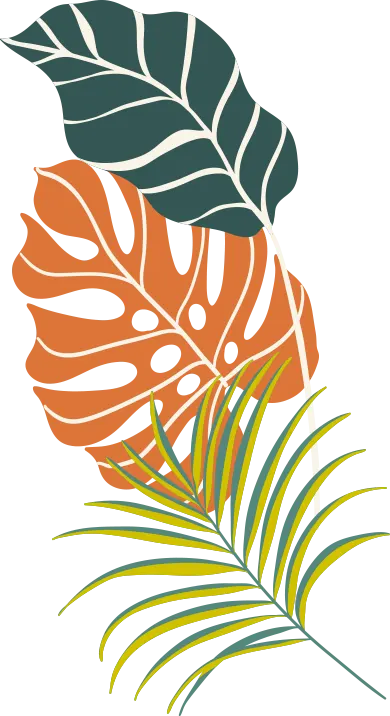Local Rules
Local Rules
BLRGC LOCAL RULES
To be read in conjunction with the Rules of Golf and applicable Temporary Local Rules
- OUT OF BOUNDS
- Those areas beyond the course boundary fences or areas marked with White stakes consisting of a Black Top.
- During the play of the 15th hole, the 13th hole is out of bounds.
- ALTERNATIVE TO STROKE AND DISTANCE FOR LOST BALL OR BALL OUT OF BOUNDS (Model Local Rule E-5)
When a player’s ball has not been found or is known or virtually certain to be out of bounds, the player may proceed as follows rather than proceeding under stroke or distance.
For two penalty strokes, the player may take relief by dropping the original ball or another ball in this relief area:
(a) Ball Reference Point: The point where the original ball is estimated to have last crossed the edge of the course boundary to go out of bounds.
(b) Fairway Reference Point: The point of fairway of the hole being played that is nearest to the ball reference point but is not nearer the hole than the ball reference point.
- PENALTY AREAS (Rule 17)
- Defined by Red stakes / Lines
- ABNORMAL COURSE CONDITIONS (Rule 16)
- Abnormal Course Conditions are defined by any area encircled by a white line or consisting of White Stakes, a single white stake or GUR sign and the player may take relief under Rule 16.1.
- Tracks, bare patches or depressions caused by Course maintenance machinery are also to be considered abnormal course conditions from which a player may take free relief although such areas may not be marked as above.
- ABNORMAL COURSE CONDITION – NO PLAY ZONE (Rule 16.1f)
Ground Under Repair
- Garden beds defined by Blue Stakes are no play zones that are to be treated as an abnormal course conditions. Free relief MUST be taken from interference by the no play zone.
- Staked trees are no play zones that are to be treated as an abnormal course conditions. The Abnormal Course Condition includes any stakes and/or protective guards. If a player’s ball lies anywhere on the course other than in a penalty area and it lies on or touches such a tree or such a tree interferes with the player’s stance or area of intended swing, the player must take relief under Rule 16.1.f.
- The practice green precinct, defined by blue stakes/lines/painted dots is to be treated as an abnormal course condition. Free relief MUST be taken from interference by the no play zone. A player whose ball lies in this abnormal course condition must proceed to the nearest Drop Zone without penalty.
Immovable Obstructions
- All Roads, Paths, Bridges, Pebbled Areas in the General Area are treated as immovable obstructions from which free relief is allowed under Rule 16.1.
- DROP ZONES
- Hole 4 Should a ball come to rest in the Garden area defined by a blue line/stakes players must proceed to the nearest Drop Zone without penalty.
- Hole 8 Should a ball come to rest in the penalty area to the left of the cart path beyond the bridge the player may proceed to the nearest Drop Zone incurring a 1 shot penalty.
- Hole 8 Should a ball fail to clear the pond or come to rest in the penalty area of the pond, a player may proceed to the Drop Zone (beyond the bridge) incurring a 1 shot penalty.
- Hole 14 Should a ball fail to clear the pond or come to rest in the penalty area of the pond, a player may proceed to the nearest Drop Zone (beyond the pond) incurring a 1 shot penalty.
- Hole 15 Should a ball fail to clear the dam or come to rest in the penalty area adjacent to the dam a player may proceed to the Drop Zone incurring a 1 shot penalty.
- IMMOVABLE OBSTRUCTIONS (EG SPRINKLER HEADS) CLOSE TO PUTTING GREENS – LINE OF PLAY INTERFERENCE
- Rule 16.1b applies to immovable obstructions close to putting greens. In addition to the types of interference described in Rule 16.1a, interference also exists if an immovable obstruction is: on the player’s line of play, and is within two club-lengths of the putting green, and is within two club-lengths of the ball. (Exception – There is no relief under this Local Rule if the player chooses a line of play that is clearly unreasonable.)
- DROPPING ZONES (indicated by Blue Drop Zone stake)
- When the player is using a dropping zone, the ball must be dropped in the dropping zone and it must come to rest in the dropping zone.
PENALTY FOR BREACH OF LOCAL RULES
Stroke Play – General Penalty Two (2) Strokes | Match Play – Loss of Hole
GENERAL CONDITIONS OF PLAY
- All players must carry and use a sand bucket, fill divots and repair pitch marks.
- Green staff have right of way at all times.
- Carts must be kept on paths where practical and obey all signage directions
MATCH PLAY INDEX
| HOLE | 1 | 2 | 3 | 4 | 5 | 6 | 7 | 8 | 9 | 10 | 11 | 12 | 13 | 14 | 15 | 16 | 17 | 18 |
| INDEX | 18 | 8 | 12 | 3 | 14 | 6 | 10 | 1 | 16 | 5 | 11 | 2 | 15 | 7 | 13 | 4 | 17 | 9 |
Sprinkler Heads – September 2024
New Relaxed Rules = More Enjoyment
Enjoyment and fun is a big reason why we play golf, and in 2019 the worldwide governing bodies for the game of golf, announced a series of changes to the rules of golf. These adjustments were designed to speed up your rounds, and increase your enjoyment of the game. Rules to be read in conjunction with the 2019 R&A Rules of Golf.



 |
 |
 |
 |
Golf Etiquette
General Conditions of Play
- All players must carry a sand bucket, fill all divots and repair pitch marks
- Green staff have the right of way on the course at all times
- Carts must be kept on paths, where practical, and are not permitted to cross blue lines near green and tee complexes
- All players must keep up with the group ahead.
Prior to Play
- Arrive at least fifteen minutes prior to your tee time to check in.
- No more than four players in a group.
- Be prepared to have others join you if you have less than 4 in your group.
- Be ready to play when it is your time to tee off.
On the Tee
- At Brighton Lakes we play and recommend ‘Ready Golf’ (who ever is ready plays)
- Mark your ball so that you can identify it.
- Hit ONLY when golfers ahead of you are out of range.
- Stand still and facing other golfers while they are hitting.
- Watch where all balls go to avoid time spent looking for lost balls.
- Yell the warning “FORE!” if your ball is heading toward another golfer.
The Fairway
- Walk directly to your ball unless you reach someone else’s ball first.
- Take no more than one practice swing.
- Player furthest from the hole usually plays first but golfers out of range of the group in front can play first, if ready.
- Walk briskly between shots and be ready to play when it is your turn.
- Keep pace with the group in front of you at all times.
- Assist playing partners when needed by bringing clubs, finding lost balls, etc.
On the Green
- Avoid pulling carts or driving carts across the green.
- Place your bag or cart between the green and the next tee.
- Take all clubs that you may need.
- Repair your own ball marks and one other.
- Avoid stepping on another player’s putting line.
- Players begin putting when all balls are on the green.
- The person furthest away from the hole putts first.
- Mark your ball if it is in the path of another player’s ball.
- Record all scores on the next tee.
Tips to Avoid Slow Play
The number one problem in golf today, as evidenced by the overwhelming golfer complaint, is Slow Play. The following tips can help you keep pace with the group in front of you at all times.
- Be ready to hit when it is your turn.
- Limit practice swings to one or none.
- Take plenty of clubs with you to your ball when leaving your bag or riding cart.
- Consider all options as you approach your ball to make decisions quickly.
- Watch all balls until they stop rolling to avoid lengthy searches.
- Use a fixed object as a reference point.
- All players should go directly to their own ball and play when ready.
- If you do fall behind, let faster groups play through.
- Continue putting until holed out unless you would be standing on someone’s putting line.
- Remember, by keeping pace you make the game more enjoyable for everyone!!
